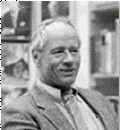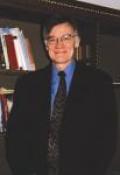Caught between his campaign for president and his duties as governor, FDR navigated political pressures to force the resignation of New York City’s corrupt mayor, Jimmy Walker.
“I will leave this house only if I am dead,” the prominent New York doctor told his ex-wife, who was seeking half the value of their Manhattan townhouse in a divorce.
The World Trade Center attack wasn’t the first time New York was brutally assaulted — 225 years before, George Washington watched the city burn from his headquarters in northern Manhattan after painful military defeats.
Editor's note: Karin Abarbanel is the author of several nonfiction books. She grew up in Washington Heights just a few blocks from the Morris-Jumel Mansion.
Hotel Pennsylvania in Midtown Manhattan has been slated for destruction for the past 20 years which leaves New York City preservations with little hope as the powers capable of saving the iconic structure stand idle. Are they right to let it go?
Newsboys in antebellum New York and elsewhere were embroiled in all the major conflicts of their day, becoming mixed metaphors for enterprise and annoyance.
Editor's Note: Vincent DiGirolamo is a professor of history at Baruch College in New York City.
The British seize Manhattan from the Dutch in 1664 — and alter the trajectory of North American history.
On September 5, 1664, two men faced one another across a small stretch of water.
Theodore Roosevelt, his widow recalled, watched Lincoln’s funeral from his grandfather’s house
Working on this, our 21st annual travel issue, reminded me that I am fortunate enough to have a most agreeable travel destination virtually under my feet. This is the Forbes Galleries in the company’s headquarters at 62 Fifth Avenue in New York City. I first visited them 20 years ago.
How lucky to have Central Park as your back yard
It has been the received wisdom of the suburban age that kids grow up better in the country, where there is access to fresh air, trees, wildlife (although not too much of it, please), and other good things.
A never-before-seen report reveals just how fragile our great cities were, and remain.
There was a time when urban Americans weren’t afraid of terrorists, bombs, and poison gas. The worst thing that could happen in a city was a strike. Cities were unprepared for labor walkouts because nobody could tell who would strike or when and where. Mayors saw to it that they kept on good terms with unions.
A novelist's meditation on discovering what a particular time in Harlem says about the whole nation
The city of the departed Dodgers, of Henry Ward Beecher, Walt Whitman, and Coney Island, is ready for its next act as a world-class tourist destination.
In 1800, the United States was an underdeveloped nation of just over five million people. It was a society shaped by immigration, but immigrants from one country, Great Britain, made up around half the population.
In a nation of immigrants, picking ten books about the immigrant experience is no easy task. One could plausibly argue that any book about post-Columbian America concerns the immigrant experience.
Martin Scorsese has drawn on his own youth and his feelings about the past, and has rebuilt 1860s New York, to make a movie about the fight for American democracy. Here, he tells why it is both so hard and so necessary to get history on film.
I spoke with Martin Scorsese in early September about his forthcoming movie Gangs of New York. The setting was the Park Avenue offices of his Cappa production company, where he was still hard at work, editing and finishing his film.
On Manhattan’s Lower East Side, you can visit a haunting re-creation of a life that was, at once, harder and better than we remember.
One of America’s greatest documentary filmmakers takes on America’s greatest city: Ric Burns discusses his new PBS series, New York.
How a mass killing 150 years ago made today’s New York a better place
The children are back at Columbine High School now— if they can still truly be called children after the terrible violence perpetrated upon them. We can only hope that the murder of twelve of their classmates was a random moment of madness.
How a tireless impresario parlayed a cloud of smoke into several fortunes
If you walk through the business districts of American cities these days, in even the worst of weather, you will see underdressed people huddled in doorways. No, they’re not homeless; they’re smokers.
The law of unintended consequences is nowhere more obvious than in the results of man-made laws. Prohibition, by eliminating demon rum, was supposed to alleviate poverty and disease. What we got was Al Capone.
I’ve recently moved up in the world, from the tenth floor to the seventeenth, and four blocks closer to the Hudson River, a slate gray slice of which I can just see from where I’m writing.
It is a very old joke among real estate brokers that only three things determine the value of a parcel of land: location, location, and location. The reason the joke has been around so long, of course, is that it is mostly true.
He excelled at business and made Macy's highly profitable. But Nathan Straus was even better at giving away his earnings to help people in need.
American art was hardly more than a cultural curiosity in the early years of this century. Now, it is among the world’s most influential, and much of the credit belongs to a self-made woman named Juliana Force.
Today, when a painting by a living American artist fetches seventeen million dollars at auction, as a picture by Jasper Johns did last year, or when hundreds of people stand in line to get into a museum, as they did for the retrospectives of Edward Hopper, Wi
The great buildings of the 1920s are standing all over Manhattan, preserving in masonry the swank and swagger of an exuberant era.
New York rebuilt itself in the twenties. The most anarchic, self-regarding, self-proclaiming city of them all achieved its new self by an astounding vertical leap that thrilled, disordered, delighted, and terrified the critics who tried to take its measure.
A trackside album of celebrities from the days when the world went by train
A person used to enter New York City “like a god,” said the art critic Vincent Scully, but “one scuttles in now like a rat.”
One of the country’ more bizzarre labor disputes pitted a crowed of outraged newsboys against two powerful opponents: Joseph Pulitzer and William Randolf Hearst.
Joseph Pulitzer, nearly blind, suffering from bouts of depression, and so sensitive to sound he exploded when the silverware was rattled, managed his newspapers in absentia for the last twenty years of his life.
A gathering of little-known drawings from Columbia
University’s Avery Architectural and Fine Arts Library illuminates two centuries of American building
ONE OF THE WORLD’S most renowned architectural institutions is named for a virtually unknown architect who died at age thirty-eight, too young to have made more than a promising start in his own career.
The ceaseless clatter of cheap pianos from a mid-Manhattan side street was once music to all America
ONE DAY IN 1922 a young would-be composer named Richard Rodgers paid a call on Max Dreyfus, head of the publishing firm of T. B. Harms and dean of Tin Pan Alley.





